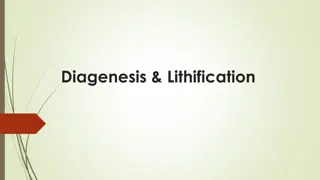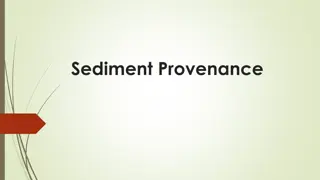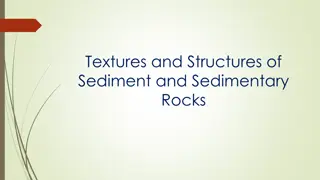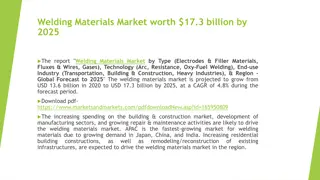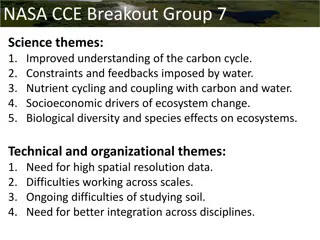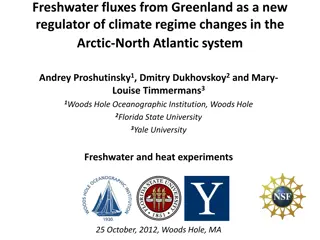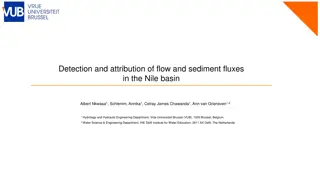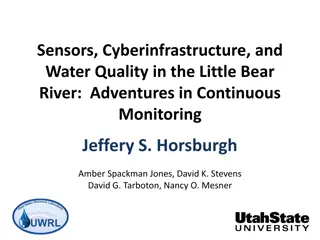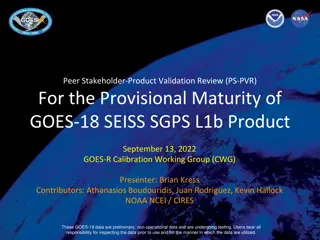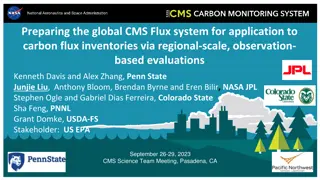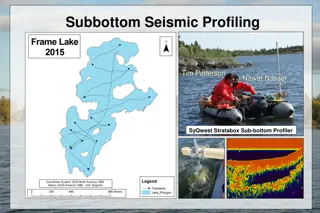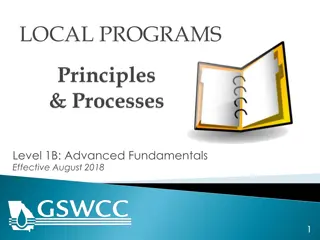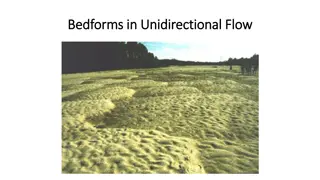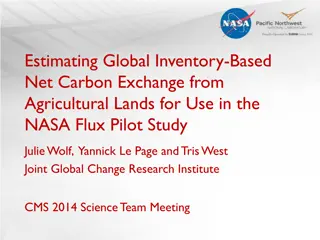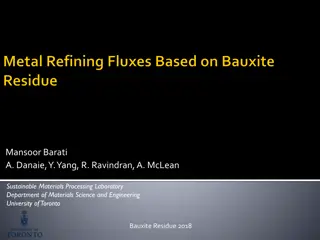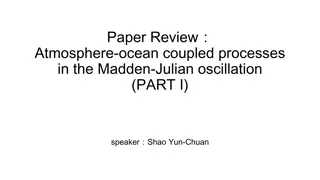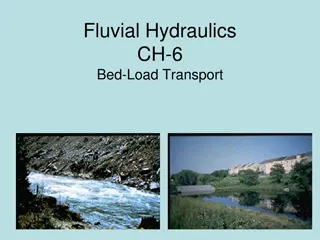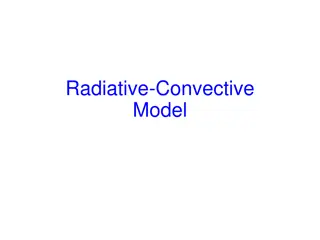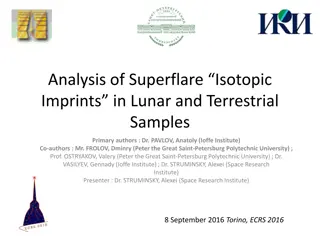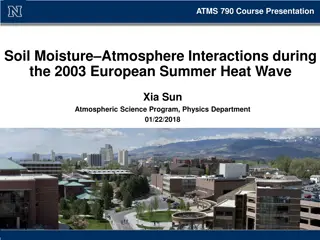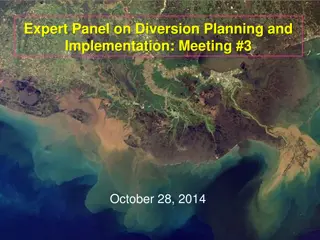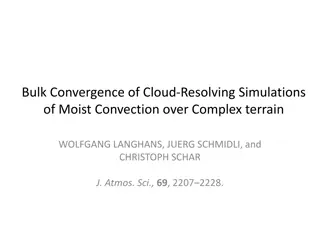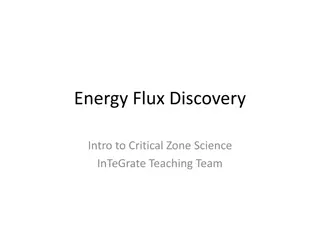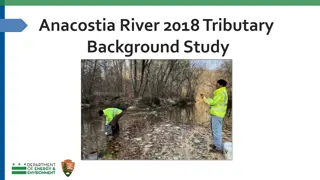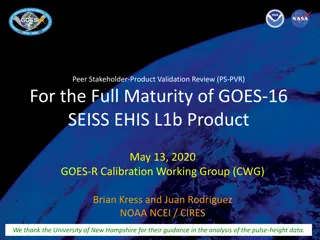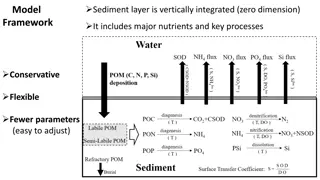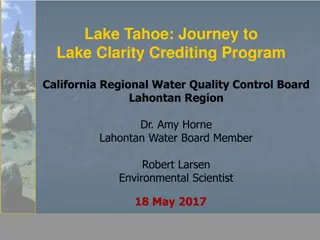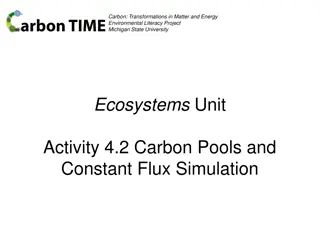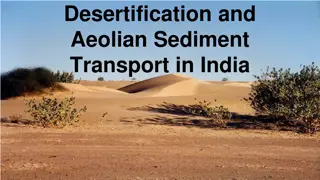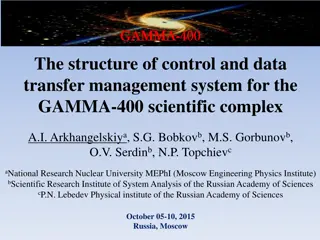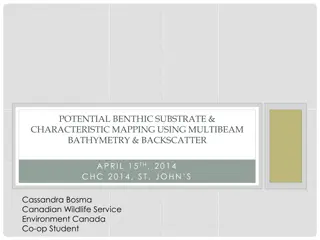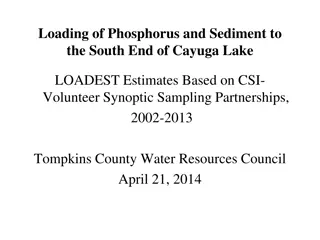Understanding Diagenesis and Lithification in Sedimentary Rocks
Diagenesis and lithification are crucial processes that transform loose sediment into solid rock through compaction and cementation. Diagenesis involves various chemical, physical, and biological changes while lithification involves the pressure-induced consolidation of sediment. Compaction removes
0 views • 15 slides
Understanding Sediment Provenance in Geology
Sediment provenance in geology involves reconstructing the origin of sediments through compositional analyses to determine erosion history and geographical origins. It helps characterize the journey of sediments from source to sink, providing insights into tectonic and paleoclimatic histories. Prove
1 views • 11 slides
Understanding Sediment and Sedimentary Rock Textures
Discover the textures and structures of sediment and sedimentary rocks, including clastic and crystalline textures, primary and secondary textures, and the effects of compaction. Learn about sediment texture, differences in sedimentary rock texture, and the classification of grain sizes using the We
1 views • 20 slides
Welding Materials Market worth $17
The report \"Welding Materials Market by Type (Electrodes & Filler Materials, Fluxes & Wires, Gases), Technology (Arc, Resistance, Oxy-Fuel Welding), End-use Industry (Transportation, Building & Construction, Heavy Industries), & Region - Global Fore
1 views • 3 slides
Successful Channel Modification Techniques and Benefits
Channel modification projects aim to accelerate the recovery of stable, sustainable channel forms in dynamic balance with sediment, large wood, and flow regimes. Successful modifications lead to improved habitat quality, stability, and diversity, benefiting sediment transport and riparian zones. Phy
0 views • 15 slides
NASA CCE Breakout Group 7 Research Themes
NASA's Carbon Cycle and Ecosystems Breakout Group 7 focuses on key science and technical themes including understanding the carbon cycle, water constraints, nutrient cycling, socioeconomic drivers, biodiversity effects, data resolution challenges, interdisciplinary integration, and more. Researchers
0 views • 6 slides
Freshwater Fluxes from Greenland and Climate Regime Changes in the Arctic-North Atlantic System
Freshwater fluxes from Greenland are identified as a new regulator of climate regime changes in the Arctic-North Atlantic system. The Arctic Ocean Oscillation Index reveals two circulation regimes with alternating patterns. Correlations between the Arctic Ocean Oscillation and various environmental
1 views • 32 slides
Detection and Attribution of Flow and Sediment Fluxes in the Nile Basin
This study aims to detect and attribute climate change impacts on flow and sediment loads in the Nile basin using climate data and hydrological models. The research focuses on historical data and involves evaluating models, completing paper writing, and finishing the detection and attribution analys
0 views • 4 slides
Continuous Monitoring of Water Quality in Little Bear River
Explore the implementation of sensors, cyberinfrastructure, and continuous monitoring networks in the Little Bear River to improve water quality predictions. Discover the challenges and solutions related to designing monitoring networks, integrating optical measurements with water quality data, and
1 views • 38 slides
GOES-18 SEISS Solar Galactic Proton Sensor Product Validation Review
GOES-18 SEISS SGPS L1b product is undergoing provisional maturity testing by the GOES-R Calibration Working Group. The review includes evaluation of product quality, supporting instruments, health tests, and path to full validation. Users are responsible for inspecting and utilizing the preliminary
0 views • 39 slides
Analysis of GOES Solar Flare Peak Fluxes Frequency Distribution (1994-2005)
This presentation explores the frequency distribution of GOES solar flare peak fluxes from 1994 to 2005. It discusses the background on GOES satellites, event detection methods, data processing techniques, and the effects of time and quantization filters on the data. The analysis includes examples o
1 views • 20 slides
Application of CMS-Flux System for Carbon Flux Inventories Evaluation
Preparation for the global CMS Flux system integration with US forest and agricultural carbon inventory data to quantify uncertainties and enhance inventory-relevant flux estimates. The project aims to evaluate the utility of CMS-Flux-NA system for top-down assessment of US agricultural and forest C
2 views • 21 slides
Environmental Impact Assessment of Frame Lake and Recommendations
The subbottom seismic profiling and stratigraphy studies reveal the sediment layers in Frame Lake and the impact of urban development on water quality. Glew coring analysis identifies layers of arsenic contamination. Recommendations include dredging to restore the lake's natural state pre-1975. The
0 views • 13 slides
Local Programs for Erosion and Sediment Control: Guidelines and Certifications
Comprehensive information on the importance and implementation of local erosion and sediment control programs, including principles, standards, processes, and certification requirements. Emphasis on the need for local officials and personnel to have the knowledge and authority for effective program
0 views • 45 slides
Bedforms in Unidirectional Flow: Characteristics and Formation
Bedforms in unidirectional flow exhibit various characteristics such as sediment layer thicknesses, boundary layer dynamics, presence of ripples and dunes, and the interplay between flow velocity and sediment deposition. These bedforms, including ripples and dunes, form due to interactions between t
3 views • 13 slides
Estimating Global Inventory-Based Net Carbon Exchange from Agricultural Lands
This study aims to quantify global agricultural carbon fluxes by considering above- and belowground crop biomass, crop residues, livestock interactions, and human food intake. The methods involve combining inventory data and spatially resolved estimates of Net Carbon Exchange (NCE). Satellite-based
0 views • 16 slides
Sustainable Processing of Bauxite Residue for Environmental Benefits
Sustainable Materials Processing Laboratory at the University of Toronto is focusing on innovative ways to neutralize acidic soil, treat mining wastes, and recover metals using bauxite residue. The research also delves into the properties of hot metal and steel, emphasizing steelmaking processes for
0 views • 22 slides
Understanding Atmosphere-Ocean Coupling in Madden-Julian Oscillation
Atmosphere-ocean coupled processes in the Madden-Julian Oscillation (MJO) play a crucial role in intraseasonal oscillations. This paper review by Shao Yun-Chuan explores how the ocean's Sea Surface Temperature (SST) influences surface fluxes, MJO convection, and energy balance dynamics. It delves in
0 views • 17 slides
Understanding Sediment Transport in Fluvial Hydraulics
Sediment transport equations play a crucial role in predicting sediment capacity under different flow conditions, aiding in various analyses like aggradation, degradation, scour, deposition, and migration. Different formulas cater to varied scenarios, distinguishing between bed load and suspended lo
0 views • 82 slides
Detailed Overview of a Radiative-Convective Model for Weather Prediction
This detailed overview explores the components of a Radiative-Convective Model, covering convection, radiation transfer, cloud-radiation interaction, and surface fluxes. The model incorporates algorithms and parameterizations to simulate various cloud types, radiative transfer processes, and surface
1 views • 9 slides
Understanding Raw Materials in Ceramic Production
Raw materials play a crucial role in ceramic production, with three main groups identified - plastic materials like clay, non-plastic or leading mixtures such as silica, and fluxes/mineralizers like feldspar. These materials undergo various transformations during the manufacturing process, contribut
0 views • 29 slides
Understanding Sedimentology: An Overview of Sedimentary Processes and Rocks
Sedimentology is the study of modern sediments like sand, mud, and clay, along with the processes involved in their deposition. Sedimentologists use this knowledge to interpret Earth's geologic history through sedimentary rocks and structures. Sediment plays a crucial role in enriching soil with nut
0 views • 27 slides
Integrated Terrestrial-Coastal Ocean Framework for Carbon Management
An advanced framework integrating terrestrial and coastal ocean observations and modeling is developed to support carbon management decisions. The study focuses on assessing the impacts of land use, human activities, and climate scenarios on the carbon cycle, particularly dissolved inorganic carbon
0 views • 5 slides
Analysis of Superflare Isotopic Imprints in Lunar and Terrestrial Samples
Researchers investigate isotopic imprints in lunar and terrestrial samples to understand extreme solar events and their impact on atmospheric radiocarbon concentrations. Using 10Be and 36Cl data, they analyze the solar proton spectra and energy fluxes associated with these events, shedding light on
0 views • 13 slides
Soil Moisture-Atmosphere Interactions in the 2003 European Summer Heat Wave
This presentation discusses the significant impacts of soil moisture-atmosphere interactions during the 2003 European Summer Heat Wave, highlighting the abnormally hot weather, pavement buckling, and high-pressure systems that contributed to the extreme conditions. The images and diagrams illustrate
0 views • 27 slides
Expert Panel on Diversion Planning and Implementation Meeting Report
A detailed overview of the Expert Panel on Diversion Planning and Implementation Meeting including its purpose, composition, authority, and focus on providing technical advice for freshwater and sediment diversion projects, particularly in the Mississippi River and Louisiana restoration efforts. The
0 views • 10 slides
Analysis of Cloud-Resolving Simulations Over Complex Terrain
Examining cloud-resolving simulations of moist convection over complex terrain using large eddy simulation (LES) and deep convective fluxes. The study includes characteristics of the simulations, numerical convergence, and turbulent diffusion. Results reveal insights into the behavior of convective
0 views • 20 slides
Exploring Energy Flux in Critical Zone Science
Dive into the world of energy flux discovery in the critical zone science, understanding common water and energy fluxes, cloud formations, and tracking monthly Ameriflux energy fluxes in various forest environments. Engage with visual representations and data models to grasp the intricate balance of
0 views • 5 slides
Anacostia River Tributary Sediment Study 2018
This study focuses on analyzing bottom sediment samples from five major tributaries of the Anacostia River to determine concentrations of contaminants of concern (COCs) and identify possible point sources of pollution. The research aims to establish anthropogenic background concentrations, compare t
0 views • 10 slides
Biomass-Flux Working Group Overview
The Biomass-Flux Working Group, a collaboration involving various organizations like NASA and universities, aims to integrate land-atmosphere carbon fluxes and biomass changes to enhance estimations and understanding. By identifying overlapping projects, encouraging cross-comparisons, and reconcilin
0 views • 10 slides
Review of GOES-16 SEISS EHIS L1b Product Maturity
This review focuses on the Peer Stakeholder-Product Validation for the full maturity assessment of the GOES-16 SEISS EHIS L1b Product. It includes an overview of the EHIS, anomalies, resolution status, and recommendations. The Energetic Heavy Ion Sensor aims to measure solar energetic particles and
0 views • 50 slides
Integrated Sediment Model for Nutrient Processes in Chesapeake Bay
This sediment model framework integrates major nutrients and key processes in a vertically integrated, zero-dimensional scheme. It is characterized by its conservative and flexible nature, with fewer parameters making adjustments easy. The model includes a scheme for POM remineralization and finds a
0 views • 8 slides
Understanding Sediment Dispersion along the Continental Margin
This content explores the influences and types of sediment dispersion systems along the continental margin. Processes affecting sediment supply, depositional environments, and different dispersal systems like Estuarine Accumulations Dominated and Marine Dispersal Dominated are discussed. Walsh and N
0 views • 8 slides
Understanding Lake Tahoe's Environmental Challenges
The Lake Tahoe Total Maximum Daily Load (TMDL) program aims to restore Lake Tahoe's clarity by addressing pollution sources such as nitrogen, phosphorus, and fine sediment particles. The program involves a science phase, regulatory strategy phase, and implementation phase to reduce pollutant loading
0 views • 27 slides
Carbon Transformations in Matter and Energy: A Simulation Study
Explore the dynamics of carbon pools and fluxes in an interactive simulation. Investigate how changes in initial settings affect pool sizes and observe the impact of varying fluxes on carbon transformations over time. Gain insights into net flux, patterns, and rules governing pool size changes in ec
0 views • 11 slides
Satellite Applications in Estimating Earth's Surface Energy Budget
Satellites play a crucial role in estimating the Surface Energy Budget (SEB) by providing data on various components such as Surface Radiation Budget and Surface Turbulent Fluxes. The SEB includes factors like net radiation flux, sensible and latent heat fluxes, and subsurface heat transfer. Satelli
0 views • 38 slides
Understanding Desertification and Aeolian Sediment Transport in India
Climates in India, particularly in the desert areas like Rajasthan, are heavily influenced by the monsoon season, with 32% of the land facing the threat of desertification. The upward eddie wind currents in the region can lift silt and very fine sand up to 4km. Various factors contribute to desertif
0 views • 17 slides
Overview of GAMMA-400 Scientific Complex
The GAMMA-400 Scientific Complex, designed by experts from National Research Nuclear University MEPhI and other institutions, consists of a gamma-ray telescope, space observatory, and various detectors for studying cosmic gamma emission, electron/positron fluxes, and cosmic-ray nuclei fluxes. The co
0 views • 16 slides
Understanding Benthic Substrate Characterization Through Multibeam Bathymetry
Utilizing multibeam bathymetry and backscatter data, this project focuses on mapping potential benthic substrates in marine environments. The history, procedures, and possible classification schemes are discussed, highlighting the importance of analyzing backscatter data for sediment classification.
0 views • 28 slides
Estimation Methodology for Phosphorus and Sediment Loading in Cayuga Lake Watershed
Explore the process of estimating phosphorus and sediment loading at the south end of Cayuga Lake using LOADEST methodology. Learn how to combine synoptic monitoring data with USGS flow measurements and run calculations to obtain yearly load numbers. Get step-by-step instructions and access helpful
0 views • 13 slides
